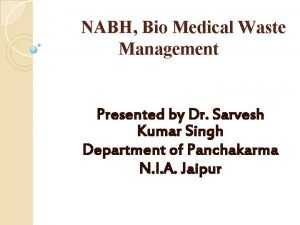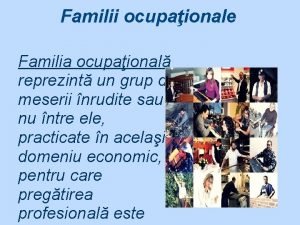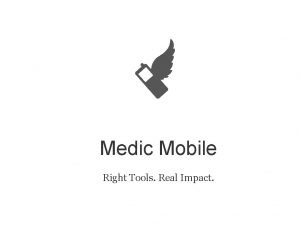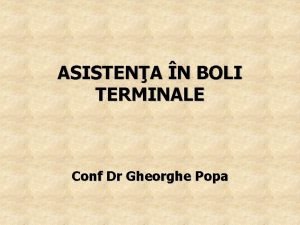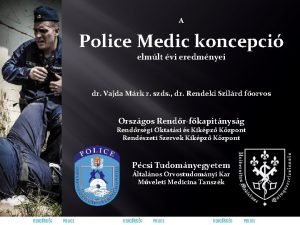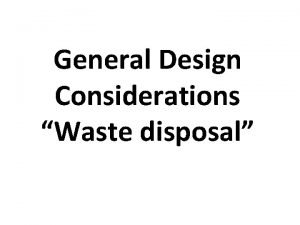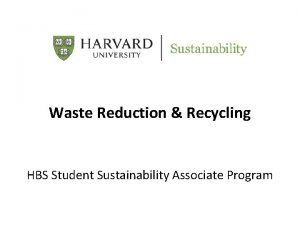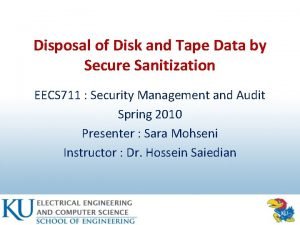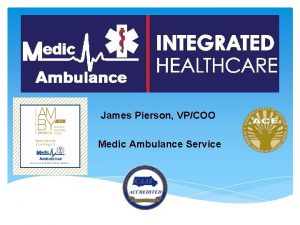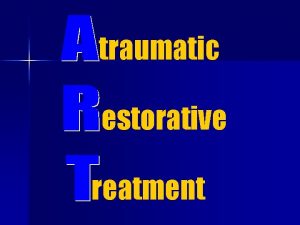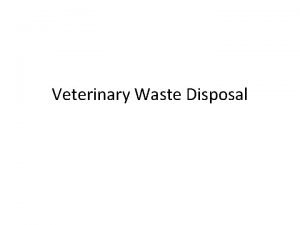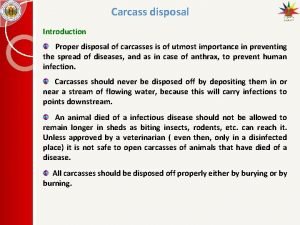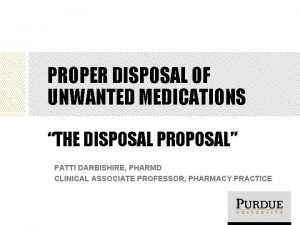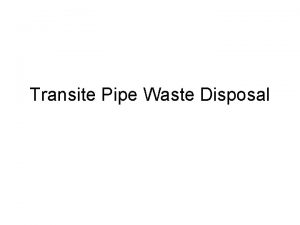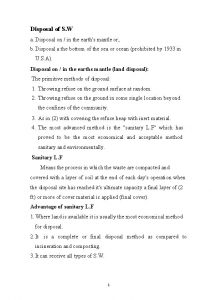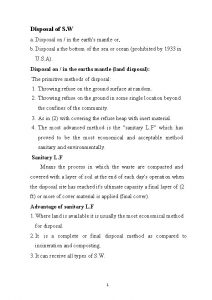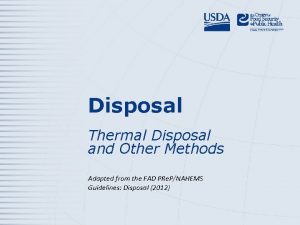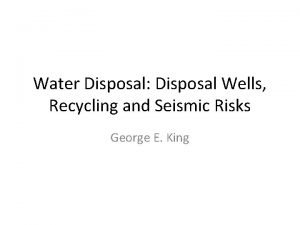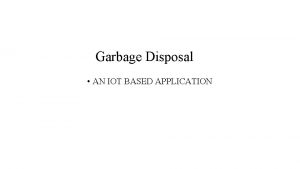Ti REATMENT DISPOSAL 5 DISCARDED MEDIC 1 NE


















- Slides: 18

Ti. REATMENT /DISPOSAL 5 DISCARDED MEDIC 1 NE / CYTOTOXIC DRUGS ASTE 6 (rr. EMS CONTAMINATED WITH BLOOD AND BODY UIO A Ol. SPOSAL IN SECURED LANDRLI. / INC[NERATIO INCINERATION 155

SCHEDULE II COLOUR CODING AND TYPE OF CONTAINER USED FOR DISPOSAL OF BIOMEDICAL COl. OUR C OOING YEll. OW TYPE OF CONTAJNER TO B£USED NON CHl. ORI'NATID PLASn. CBAGS WASTE CATEGORY NO 1, 2 , 5, 6 TREATMENT OPno. N INCINERATION 156

0 l. A: SUJEFf. KUMAR 157

Disposal of biomedical waste includes three stages: Collection and segregation Transportation and storage Disposal techniques 158

DISPOSAL TECHNIQUES: 0 1. Chemical disinfection: Solid waste must be disinfected before they are sent for final disposal. Chemical disinfection is most appropriate method for to treat the liquid waste such as blood, urine, and 159

stool or hospital sewage. 160

2. Thermal measures: 161

Autoclave (wet thermal treatment): It is effective method of sterilization for microbiology and biotechnology waste. Hydroclave(dry thermal treatment): In this method shredded infectious waste is exposed to high temperature, high pressure steam like autoclaving. It dries 80% liquid of waste and waste is reduced to 20 -30% in weight. Adequately trained operators or 162

technicians are needed for its operation. 163

3. Microwave irradiation: This technique is also effective like autoclave in sterilizing infected disposable waste. Most of microorganism destroyed by action of microwaves. 4. Incineration: It is a high temperature dry oxidation process that reduces organic, incombustible matter. It also reduces 164

the volume and weight of waste. 165

5. Inertization: In this process cement and other substance are mixed with waste before disposal. Mixing of cement etc. reduces risk of migrating toxic substance into surface water or ground water. After making homogeneous mixture, cubes are prepared at site, and then transported to final disposable site. 166

6. Landfill: It is quite effective, provided practiced appropriately a sanitary landfill observing certain rues can be acceptable choice for disposal of biomedical waste, particularly in developing countries like India 167

Vr-awi"'9 a Co"'cusio"' 168

Infection is one of the leading causes of preventable death. Regardless of all work area, preventing the transmission of organism is concern of all nurses. Hospital acquired infection are treat to population health and are not going away any time soon. It is responsibility of nurse to keep patient in their care safe by modeling effective and frequent hand washing practices and proper use of personal protective equipment. Biomedical wastes are one of the major causes of infection in hospital settings. So its responsibility of hospital authority along with 169

health team to collect, segregates, transport and store and dispose it off to safeguard the people from hospital acquired infection. 170

171

172 I
 Rational use of blood
Rational use of blood Nabh 10 chapters name
Nabh 10 chapters name Stamps from discarded envelopes is my hobby
Stamps from discarded envelopes is my hobby I just collect stamps from discarded envelopes
I just collect stamps from discarded envelopes Familii ocupationale
Familii ocupationale Mandalorian medic
Mandalorian medic Medic mobile app
Medic mobile app Meddic sales model
Meddic sales model Dr gheorghe popa
Dr gheorghe popa Herr dr. medic. (im tem.) adrian balint
Herr dr. medic. (im tem.) adrian balint Popa marian
Popa marian Police medic képzés
Police medic képzés Pavle medic
Pavle medic Microbit zadaci
Microbit zadaci Disposal consideration
Disposal consideration Hbs disposal
Hbs disposal Arnprior waste disposal site
Arnprior waste disposal site Conclusion of storage devices
Conclusion of storage devices 3r solid waste management
3r solid waste management

